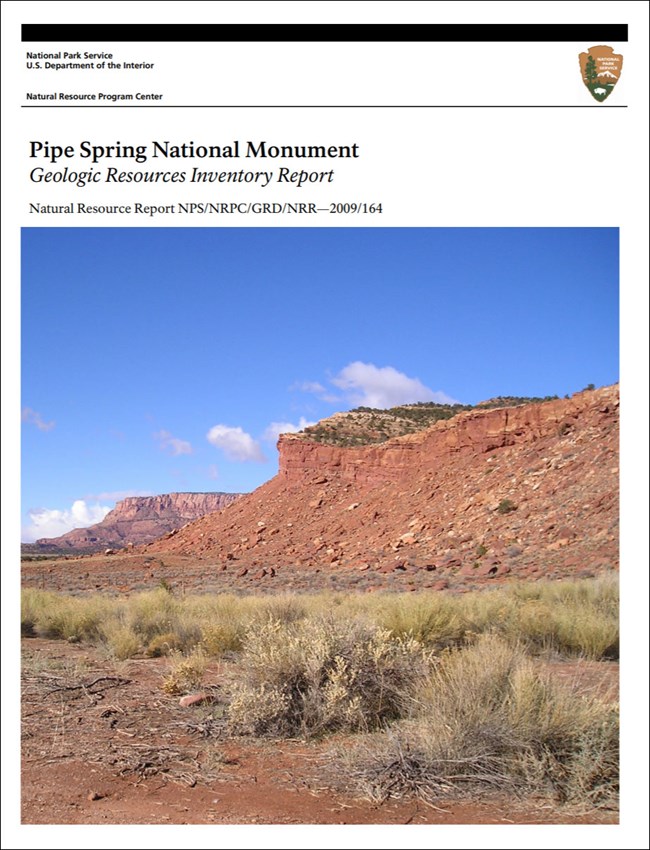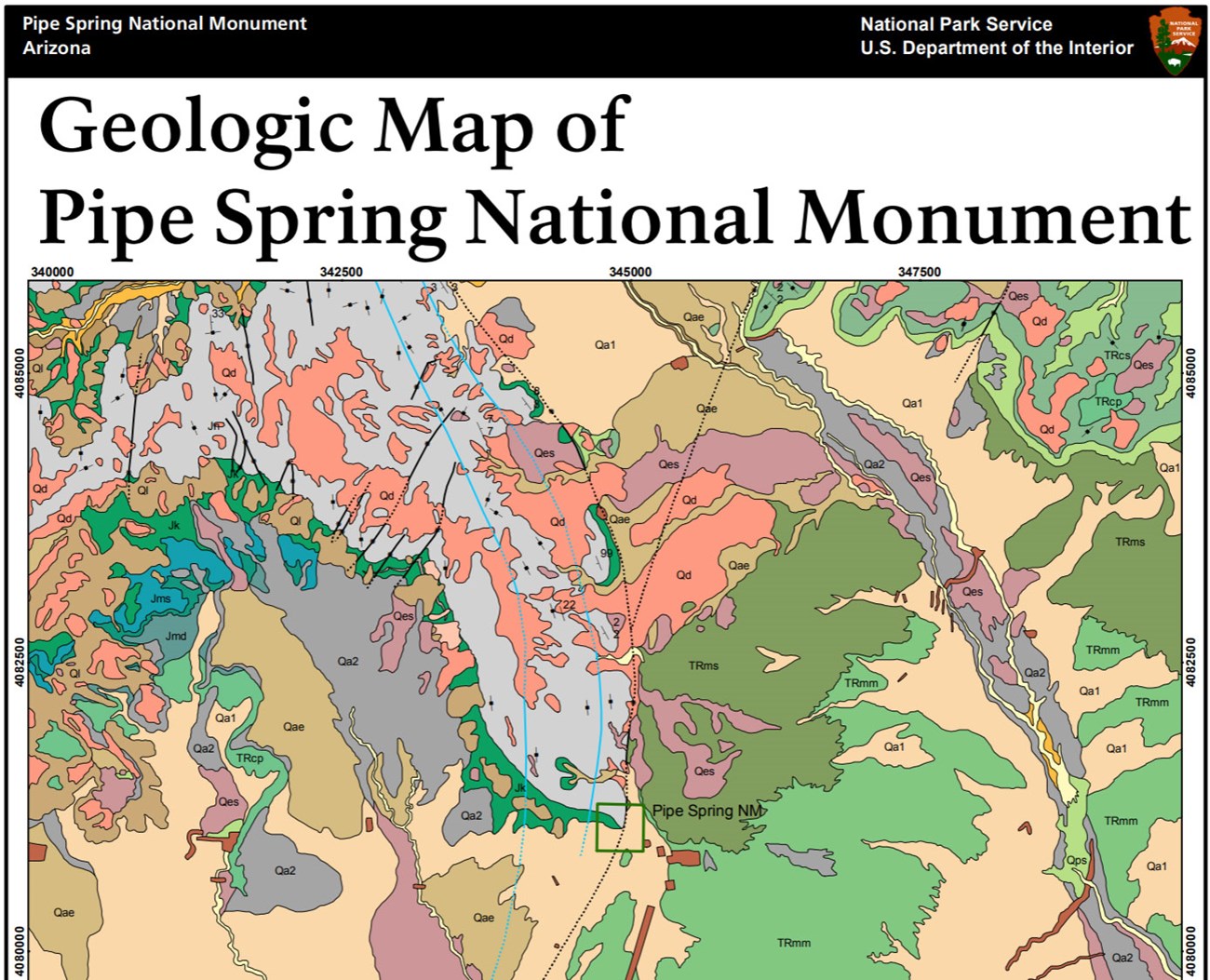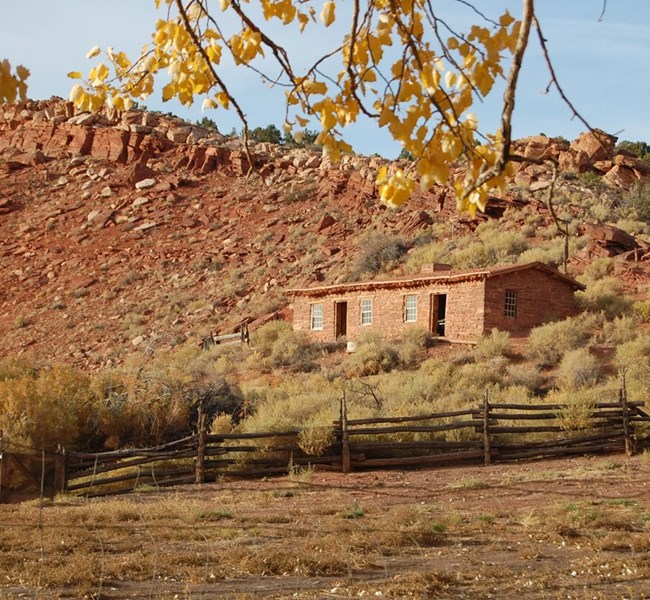Last updated: July 15, 2024
Article
NPS Geodiversity Atlas—Pipe Spring National Monument, Arizona
Geodiversity refers to the full variety of natural geologic (rocks, minerals, sediments, fossils, landforms, and physical processes) and soil resources and processes that occur in the park. A product of the Geologic Resources Inventory, the NPS Geodiversity Atlas delivers information in support of education, Geoconservation, and integrated management of living (biotic) and non-living (abiotic) components of the ecosystem.

Introduction
Pipe Spring National Monument (PISP) is located in the Arizona Strip, a geographical area north of the Grand Canyon in Mohave County, northwestern Arizona. PISP encompasses 15 hectares (40 acres) and was established May 31, 1923 to preserve the history of ancient and western life at the center of one of the most dramatic landscapes in the United States (Anderson 2017). The monument is a memorial to pioneer life and protects the springs that have sustained hundreds of years of cultural occupation and were essential to both American Indians and 19th century pioneers who called the arid region home (Graham 2010). Historic structures associated with the 1870–1923 outpost and ranching operations remain, where visitors can partake in guided tours, exhibits, and demonstrations.
Geologic Setting
The colorful bands of strata in the vicinity of Pipe Spring National Monument record a geologic history dating back to the Permian Period, approximately 275 million years ago. A variety of ancient marine and non-marine depositional environments inundated northwestern Arizona, leaving behind marine limestone and sandstone of the Permian Kaibab Formation. The Triassic Moenkopi and Chinle Formations represent a time when the region was occupied by near-shore, mudflat, floodplain, and river environments that contain geologic features such as ripple marks, mudcracks, and thin layers of gypsum. During the Late Triassic–Jurassic, vast sand dunes covered parts of Arizona and Utah, and are preserved in the Navajo Sandstone, Kayenta, and Moenave Formations. In total, approximately 198 m (650 ft) of Permian rock and about 1,036 m (3,400 ft) of Triassic and Jurassic strata comprise the sedimentary section in the PISP region (Graham 2010).
Regional Geology
Pipe Spring National Monument is a part of the Colorado Plateaus Physiographic Province and shares its geologic history and some characteristic geologic formations with a region that extends well beyond park boundaries.
- Scoping summaries are records of scoping meetings where NPS staff and local geologists determined the park’s geologic mapping plan and what content should be included in the report.
- Digital geologic maps include files for viewing in GIS software, a guide to using the data, and a document with ancillary map information. Newer products also include data viewable in Google Earth and online map services.
- Reports use the maps to discuss the park’s setting and significance, notable geologic features and processes, geologic resource management issues, and geologic history.
- Posters are a static view of the GIS data in PDF format. Newer posters include aerial imagery or shaded relief and other park information. They are also included with the reports.
- Projects list basic information about the program and all products available for a park.
Source: NPS DataStore Saved Search 3147. To search for additional information, visit the NPS DataStore.
A NPS Soil Resources Inventory project has been completed for Pipe Spring National Monument and can be found on the NPS Data Store.
Source: NPS DataStore Saved Search 3098. To search for additional information, visit the NPS DataStore.
Related Articles
Pipe Spring National Monument
National Park Service Geodiversity Atlas
The servicewide Geodiversity Atlas provides information on geoheritage and geodiversity resources and values within the National Park System. This information supports science-based geoconservation and interpretation in the NPS, as well as STEM education in schools, museums, and field camps. The NPS Geologic Resources Division and many parks work with National and International geoconservation communities to ensure that NPS abiotic resources are managed using the highest standards and best practices available.


